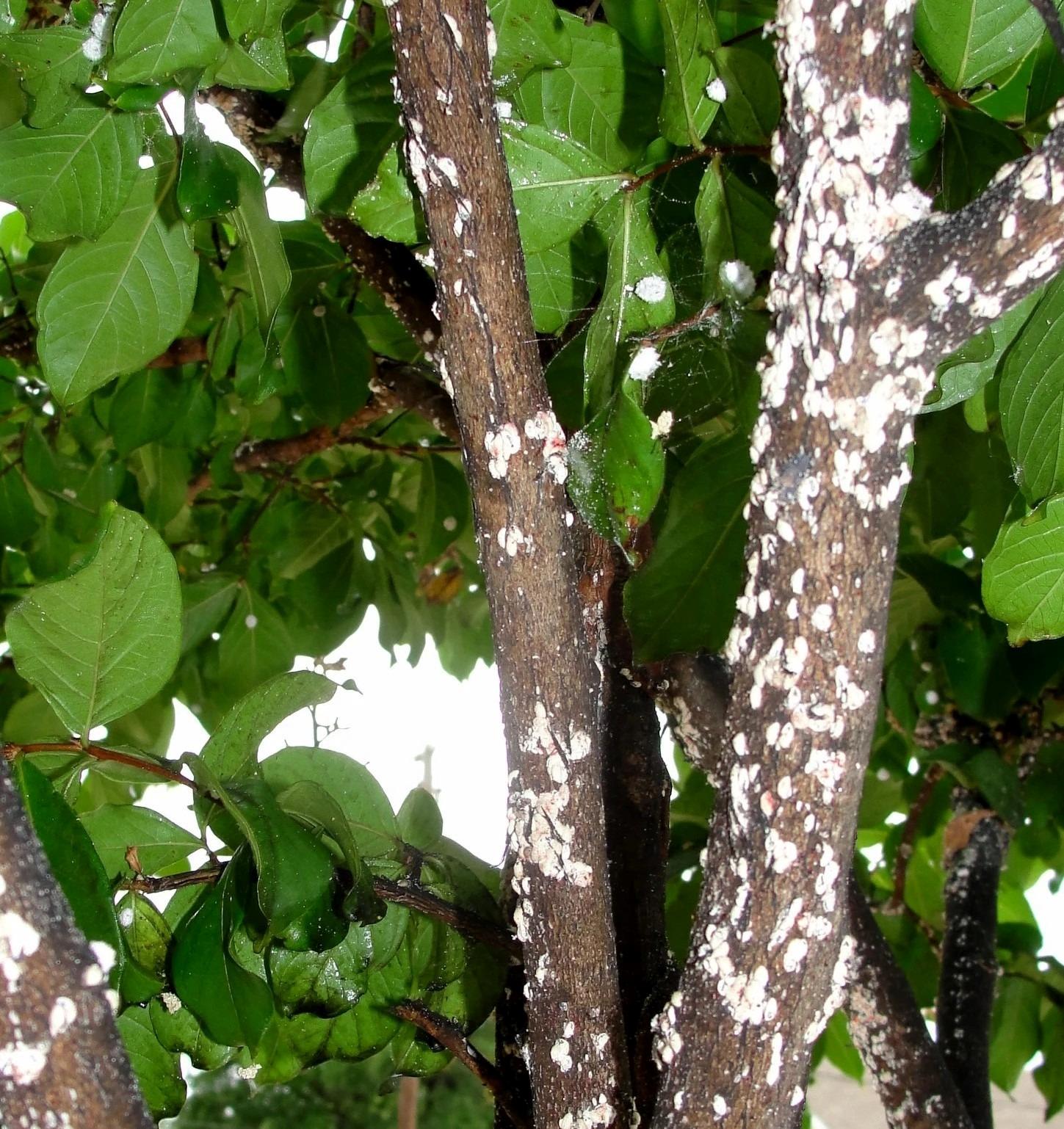Crape Myrtle (Lagerstroemia spp.) is a popular ornamental tree known for its vibrant and abundant blooms, making it a beloved choice for landscaping in central North Carolina. However, the presence of Crape Myrtle Bark Scale (Acanthococcus lagerstroemiae), an invasive insect pest, has been a growing concern in the region. This tiny insect, originally from Asia, has become a significant threat to Crape Myrtle trees, impacting their health and overall aesthetic appeal.
The Crape Myrtle Bark Scale infests the bark and branches of Crape Myrtle trees, where it forms colonies and secretes a sugary substance known as honeydew. This honeydew attracts ants, wasps, and other insects, creating a sticky mess on the tree and surrounding areas. Additionally, a black fungus called sooty mold often develops on the honeydew, further detracting from the tree's beauty.
The infestation weakens the tree by disrupting its nutrient uptake and causing stress. The continuous feeding of the Crape Myrtle Bark Scale can lead to stunted growth, dieback of branches, and in severe cases, the death of the tree. Weakened trees are also more susceptible to other pests, diseases, and environmental stressors.

In central North Carolina, the warm and humid climate provides an ideal environment for the rapid spread and proliferation of Crape Myrtle Bark Scale. Infestations can occur year-round, but they're particularly prominent during the spring and summer months. The scale can quickly multiply, making early detection and management crucial.
To combat Crape Myrtle Bark Scale infestations, integrated pest management (IPM) practices are employed. This approach may involve the use of horticultural oils, insecticidal soaps, or systemic insecticides. Additionally, promoting the natural enemies of the scale, such as beneficial insects, can help keep infestations in check. By taking proactive measures and implementing effective pest management strategies, we can protect these iconic trees and sustain the vibrant landscapes that define our region.